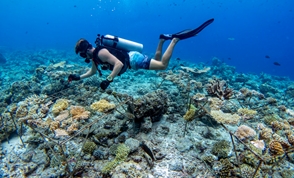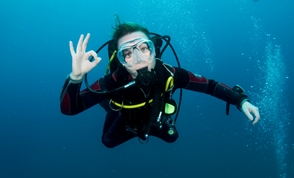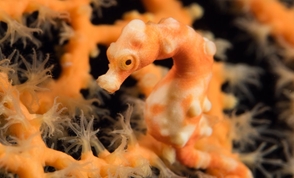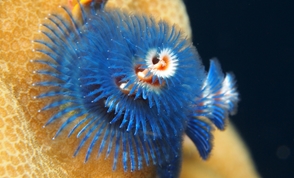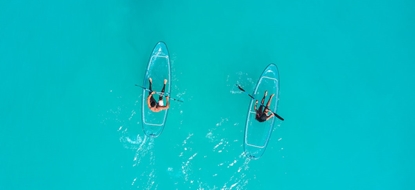Get Sunscreen Savvy
For decades, we’ve been advised to slather ourselves in sun lotion to protect our skin from the sun’s harmful UV rays. But for marine life, sunscreen has the opposite effect – it can cause immense damage, leading to coral bleaching and even altering the DNA of corals. It’s estimated that a staggering 14,000 tonnes of sunscreen end up in our oceans each year. It’s not just divers and swimmers who need to worry – sunscreen washes off your skin in the shower, making its way down the drain and ending up in waterways and oceans. So whether you’re off on a luxury dive holiday somewhere far-flung, or simply applying sun cream in the park to protect yourself, choosing the right lotion is really important. It’s considered to be such a problem that toxic sunscreens are now banned in several countries, including Hawaii, the U.S. Virgin Islands, Aruba, Bonaire, Palau and parts of Mexico.

Understanding sunscreen
Sunscreens come in two categories: physical (mineral) and chemical. Mineral sunscreens work by forming a physical barrier on your skin, blocking the sun’s rays by reflecting them away from your body. Chemical sunscreens, however, contain synthetic compounds which absorb UV rays before they hit your skin. It’s the latter type which cause the most problems, in particular a chemical called Oxybenzone (Benzophenone-3) which is widely used in many sun lotions. Mineral sunscreens aren’t completely safe either, as many contain nano-particles which are so small they can be absorbed by marine life. These minerals are toxic to many marine species, even at low concentrations.

What can I do?
Be cautious when buying sun lotion marked as ‘reef-safe’. Currently, there are no official rules or requirements to be met for a sunscreen brand to label a product as reef-safe (it’s hoped that this will eventually be regulated properly). Your best bet is to read the label very closely. As well as avoiding Oxybenzone, other nasties to look out for include octinoxate, octocrylene, homosalate, 4-methylbenzylidene camphor, para-aminobenzoic acid, parabens, and triclosan. Mineral sunscreens are a safer option, but make sure the ingredients are described as ‘non nano’, or larger than 100 nanometers in size (this means it’s harder for them to be absorbed by marine life). Even better, for your next diving holiday opt for protective clothing. In the water, wear a UV-blocking rashguard (we never travel without our Reefscape rashies) and remember that wetsuits give great sun protection. On land, many companies including luxury dive hotels now sell a range of stylish UV-safe clothing.

Reefscape Travel recommends: our top 4 picks
Thinksport SPF 50+ Sunscreen
Badger Sport Mineral Sunscreen SPF 40
Tropic Great Barrier SPF 50
All Good Sport Sunscreen Butter Stick SPF 50+




